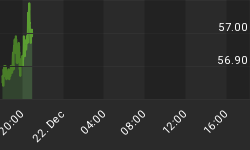With the Alibaba IPO out of the way, with gold and silver languishing at 2010 levels, and with equity markets at new all time highs, I would argue that extreme complacency - if not euphoria - has crept into the thinking of Wall Street and its assorted army of asset gatherers and brokers.
Over the past several months, we have been treated to several arguments for why this stock market can't go down, and why global turmoil is not a return of the deflationary problems of 2008-2011, but instead the beginning of a renaissance in the US economy (read stock market). As the thinking goes, money will flow to these shores without speculators caring for perceived safe havens like T bonds and, of course, the oft-maligned and left for dead precious metals in response to black swans overseas. Finally, according to the market cheerleaders, the ability of the FED to not only stop quantitative easing but raise the FED Funds rate should be of no concern to anyone thinking about joining the party in the S&P 500 after the index is up more than three times in a little over five years. No, instead, the taking away of the punch bowl will finally signal that the stock market can stand on its own two feet and just keep chugging along ever higher.
It really is tails I win, heads I win with this analysis, and even if we are in a secular bull market in both the US market and the US dollar, it is the intermediate term trend that I am concerned about.
Of particular interest to me is the argument that tightening is a non-event in the context of a stock market that has done nothing but gone vertical for the last 5 and a half years.
I would beg to differ. Two of the last times that the S&P 500 was this stretched above its 200 day moving average (according to some the US stock market hit a record this summer in terms of time spent above this average) came in 1987 and 2000. And guess what? Around that time, the Federal Reserve was either in or had been in the process of hiking the FED Funds rate - or put differently, tightening.
In 2000, we all know how that ended, and that it turned out to be the beginning of the secular bear market in stocks that, at least, for now, ended last year when the S&P finally took out its prior all time closing high. However, I am more interested in 1987, since the stock market did eventually turn higher - but only after losing nearly 30% in the space of a few weeks, and, more importantly, spending several years doing nothing.
For those who believe that secular bull markets in stocks just move along a straight line, I would politely remind them about 1987. The stock market was, at best, dead money for the subsequent five years, give or take. It also wouldn't hurt to remind the cheerleaders about 1994, when the markets also experienced a nasty- though admittedly much shorter- 20% pullback. 1994 was another one of these years when the FED had been in tightening mode. How many stock bulls out there are prepared for the S&P to potentially test 1600 within the next year?
My point here is that expectations are always most out of place at market turning points, and that value investors would do well to look elsewhere - at least temporarily - for positive 3 to 5 year returns.
After yesterday's smackdown in the precious metals - coupled with IPO euphoria - you may want to revisit the history of FED tightening, and what it could mean for your conventional stock investments. Everything I have learned and experienced about markets tells me that most people think they have an exit strategy when complacency is as high as today, but in reality, most end up looking for a door blocked by those formerly so certain that markets only move in one direction.















